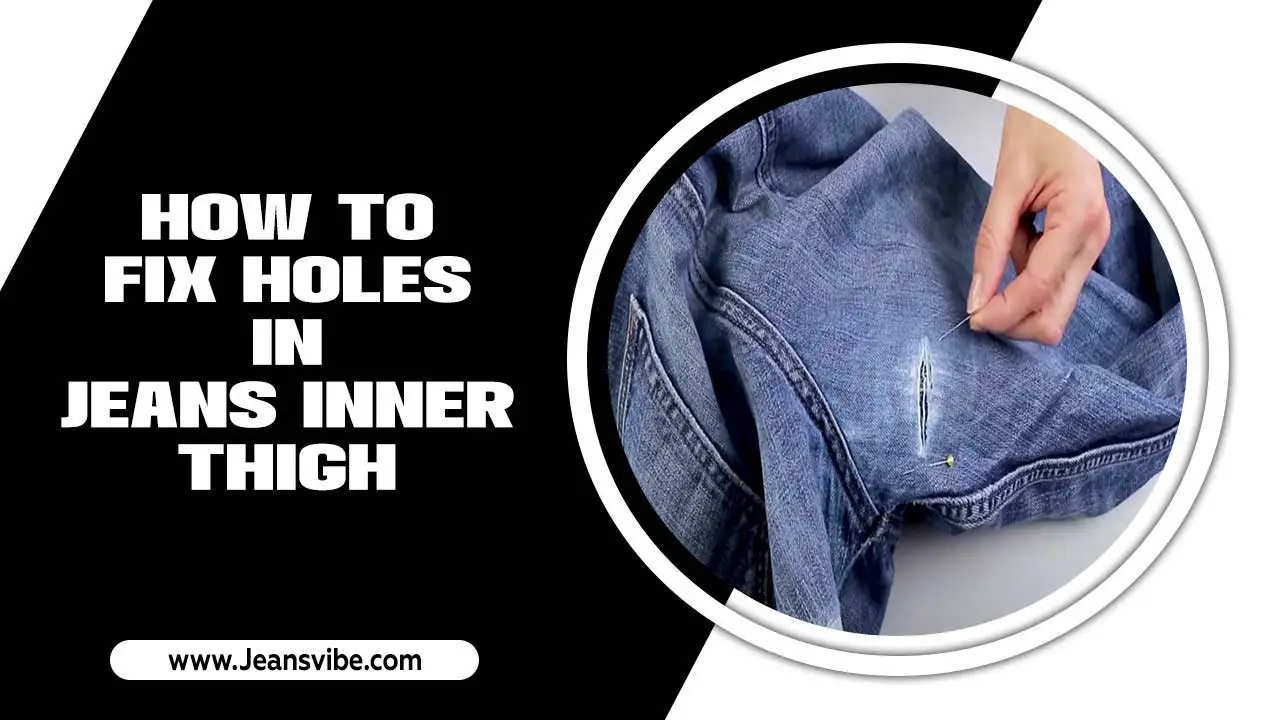Quick Summary: Learn how to easily hem your wide-leg jeans with Oxyclean for a perfect fit! This guide offers simple steps, clear visuals, and practical tips to achieve a professional-looking finish at home, ensuring your favorite jeans always look their best.
How to Hem Wide Leg Jeans: An Effortless Oxyclean Guide
Wide-leg jeans are a fashion staple, offering comfort and style. But let’s be honest, finding that perfect hem length off the rack can be a challenge. Too long and they drag, too short and they can look a little awkward. Don’t let a slightly-too-long hem keep your favorite jeans in the back of the closet! With a few simple tools and a touch of patience, you can achieve a flawless hem that makes your jeans look tailor-made. This guide will take you through the process step-by-step, using common household items and a special trick for a clean finish.
We’ll cover everything from measuring your ideal length to creating a neat hemline that complements the flow of your wide-leg denim. You’ll be confident in your ability to transform your jeans from slightly problematic to perfectly proportioned in no time. Get ready to give your denim a new lease on life!
Why Hemming Wide Leg Jeans Matters
The beauty of wide-leg jeans lies in their relaxed silhouette. However, this very characteristic can also be a tripping hazard if they’re too long. A proper hem ensures your jeans drape correctly, showcasing the intended flare without dragging on the floor or getting caught on everyday obstacles. It’s about making a stylish garment functional and polished.
Think of it this way: a well-hemmed pair of jeans looks intentional and put-together. An uncared-for hem can detract from the overall look, making even the most expensive denim appear sloppy. This guide is designed to empower you to achieve that polished look yourself, saving you trips to the tailor and giving you complete control over your style.
Gathering Your Tools: The Hemming Essentials
Before we begin, let’s make sure you have everything you need. Having your supplies ready makes the process smooth and enjoyable. You don’t need a sewing machine for this particular method, though having one can offer more permanent solutions. We’re focusing on a simple, achievable hem, with a special touch using Oxyclean.
Here’s what you’ll need:
- Your Wide Leg Jeans: The star of the show! Ensure they are clean.
- Sharp Fabric Scissors: Essential for a clean cut. Regular scissors might fray the denim.
- Measuring Tape: For accurate length determination.
- Fabric Chalk or a Disappearing Ink Pen: To mark your cutting line.
- Pins: To hold the hem in place while you work.
- Iron and Ironing Board: For pressing seams and creating crisp folds.
- Thread and Needle: For hand-stitching the hem. Choose a thread color that matches your jeans.
- Oxyclean: The secret ingredient for this guide! We’ll explain its role shortly. For reference on its cleaning power, you can check out the official Oxyclean website.
- Optional: Hemming Tape or Fray Check: For those who want extra security or a no-sew option in a pinch.
Step 1: Determine Your Ideal Jean Length
This is the most crucial step. Wearing the shoes you’ll most commonly pair with your wide-leg jeans will give you the most accurate measurement. Wide-leg styles often look best with a slight break over the shoe or just grazing the top of your footwear.
Follow these steps:
- Wear Your Shoes: Put on the exact pair of shoes you envision wearing with these jeans.
- Put on the Jeans: Wear the jeans you intend to hem.
- Stand Naturally: Stand up straight in front of a mirror.
- Assess the Length: Look at how the hem of your jeans falls. You want them to skim the top of your shoes or just barely touch the floor. For a more modern look, you might want them to end slightly above the shoe.
- Mark the Spot: Using your fabric chalk or disappearing ink pen, make a small mark on the inside seam of one leg where you want the hem to fall. It’s best to mark on the inside so it’s not visible from the outside.
- Measure and Transfer: Measure from the marked spot down to the current hem. Then, unbutton and unroll your jeans. Transfer this measurement to the other leg, ensuring it’s an exact match. Double-check your measurement by folding the hem up to where you think it should be and looking in the mirror.
A good rule of thumb for wide-leg jeans is that the hem should be about ¼ to ½ inch from touching the floor when wearing your chosen shoes. This prevents excessive dragging while maintaining the intended drape.
Step 2: Cut Away the Excess Fabric
Once you’re confident about your marked length, it’s time to cut. Be brave, but also precise! It’s always better to cut slightly longer than you think you need, as you can always trim more later. It’s impossible to add fabric back once it’s cut off.
Here’s how to cut:
- Lay Jeans Flat: Lay your jeans flat on a clean, hard surface. Smooth out the fabric to avoid wrinkles.
- Mark the Cutting Line: Using your chalk or pen, draw a straight line across the leg of the jean, about ½ to 1 inch below your desired finished hemline. This extra fabric will be folded up to create the new hem.
- Cut Carefully: Use your sharp fabric scissors to cut along the marked line. Cut one leg at a time to ensure accuracy.
- Repeat for the Other Leg: Transfer your marking and cut the second leg to match the first.
Pro Tip: If you are unsure about how much to cut, err on the side of caution and leave an extra inch or two. You can always trim more off later after you’ve tried the jeans on with the initial folded hem.
Step 3: The Oxyclean® Boost for a Distressed Hem (Optional but Recommended)
Now for the Oxyclean trick! If your wide-leg jeans have a finished hem, cutting it off can leave a stark, raw edge. For a more natural, slightly “worn-in” look that disguises the fresh cut, Oxyclean is your friend. It helps to soften the denim fibers and can give a subtly distressed appearance to the cut edge, making it blend better with the existing wash of your jeans.
This step is particularly effective if you’re aiming for that intentionally casual, lived-in vibe that many wide-leg jeans exude.
Here’s how to use Oxyclean for a softened edge:
- Prepare an Oxyclean Solution: In a bucket or sink, mix a small amount of Oxyclean powder with warm water according to the product instructions (usually about ¼ cup for a gallon of water). You don’t need a lot; we’re not trying to bleach the entire garment.
- Dip the Cut Edges: Take the cut edges of your jeans and dip them only into the Oxyclean solution. You want to saturate just the bottom inch or so of the denim where you cut.
- Let It Sit Briefly: Allow the hemmed edges to soak in the solution for about 10-15 minutes. You’re not looking for significant color change, but rather a slight softening and pre-fading of the fibers at the cut line.
- Rinse Thoroughly: Rinse the treated area with clean water until all traces of the Oxyclean solution are gone.
- Wash and Dry (Optional but Recommended): For an even more natural look, you can toss the jeans into a regular wash cycle. Then, air dry them completely. This will help blend the treated edge with the rest of the denim.
If you prefer a crisp, clean hem without any distressing, you can skip this step entirely.
Step 4: Creating the New Hem Fold
This is where we fold up the fabric to create your new hem. Precision here ensures a professional finish.
Follow these folding steps:
- First Fold: Take the cut edge of one jean leg and fold it upwards, aligning it with your original hemline (where the old hem used to be). You should now have a single fold with the raw edge tucked inside.
- Press with Iron: Use your iron to press this fold flat. This creates a crisp crease and helps the fabric stay in place.
- Second Fold (if needed): Depending on the width of your original hem and how much excess fabric you left, you might need a second fold. If your first fold already looks like a finished hem, proceed to attaching it. If you have exposed raw edges or the fold looks too thin, fold it up again so the raw edge is completely enclosed within the fold. Aim for a finished hem width of about ½ to 1 inch.
- Press Again: Press this second fold firmly with your iron. You should now have a neatly folded hem that looks like the original hem of your jeans.
- Pin in Place: Use your pins to secure the folded hem. Place pins closely together all the way around the hem to keep it from shifting. Try to pin from the outside so the pins are less visible from the inside.
Consider the Original Hem: If you want your new hem to look as close as possible to the original, try to replicate its width and stitching. This sometimes means unfolding the original hem, cutting the amount needed, and then refolding using that original folded edge as a guide.
Step 5: Attaching the New Hem
Now, we’ll secure the hem. This can be done by hand or with a sewing machine. Hand-stitching is perfectly adequate for a strong and neat finish, especially for denim.
Hand-Stitching Method:
- Thread Your Needle: Choose a thread color that closely matches your jeans. Double the thread for extra strength and tie a knot at the end.
- Begin Stitching: Start at an inconspicuous spot, like the inseam. Insert your needle from the inside of the fold, bringing it out through the fabric just above the folded edge.
- Use a Blind Hem Stitch: This stitch is ideal because it’s almost invisible from the outside. To do this, take a small stitch in the main body of the jean, just above the folded hem. Then, catch a few threads of the folded hem. Alternate between taking a small stitch in the main jean fabric and a small stitch in the folded hem. Keep your stitches small and consistent.
- Work Your Way Around: Continue stitching all the way around the hem, keeping your tension even.
- Finish Securely: When you reach your starting point, make a few extra stitches and tie a secure knot on the inside of the hem. Trim any excess thread.
Sewing Machine Method (Optional):
- Set Up Machine: Use a sturdy needle suitable for denim and matching thread.
- Stitch Close to the Edge: Sew along the top edge of the folded hem, as close to the folded edge as possible. You can use a straight stitch.
- Reinforce: Backstitch at the beginning and end to secure the stitching.
No-Sew Option (Temporary): For a quick fix, you can use a strong fabric glue or hemming tape. Apply it evenly along the folded edge and press firmly. Be aware that this method might not be as durable as stitching and could come undone with washing.
Step 6: Final Touches and Trying On
You’re almost there! This is the moment to check your work and ensure everything is perfect.
- Inspect Your Stitching: Look at your hem from both the inside and outside to ensure the stitching is secure and neat.
- Trim Loose Threads: Snip away any stray threads.
- Try Them On: Put on your jeans with the shoes you wore for measuring. Walk around a bit. Do they feel right? Do they look right? The hem should gracefully fall around your shoes.
- Make Adjustments: If the length still isn’t quite right, you can always unpick a few stitches, re-fold, re-pin, and re-stitch. It’s better to take your time now than to have jeans you don’t love.
The goal is to have your wide-leg jeans just kiss the top of your shoes or hover slightly above them, creating a clean line that complements the wide silhouette.
Alternative Hemming Techniques for Wide Leg Jeans
While the stitched hem is the most durable and professional, other methods can work depending on your needs and available tools.
Here’s a quick overview:
| Method | Pros | Cons | Best For |
|---|---|---|---|
| Sewn Hem (as detailed above) | Durable, professional, permanent, customizable finish. | Requires needle, thread, and time; can be challenging without practice. | All wide-leg jeans, for the most lasting and polished result. |
| Fabric Glue/Hemming Tape | Quick, no-sew, good for temporary fixes or simple projects. | Can be less durable, may show through lighter fabrics, might not withstand frequent washing. | Quick alterations, informal wear. |
| Fray Check (Liquid Sealer) | Prevents fraying on raw edges, can be used to secure a no-sew hem. | Can stiffen fabric, might not be suitable for all denim washes if you want a very soft edge. | Securing a raw cut hem (if you want it to fray minimally) or reinforcing a no-sew hem. |
| Hemming Clips/Temporary Stitching | Allows you to “try on” the hem before making it permanent. | Not a permanent solution, for measurement and fitting only. | Determining the exact length and placement before cutting and sewing. |
The Oxyclean method works best when combined with a sewn hem, as it preps the cut edge for a more natural look before you stitch it up. Always consider the type of denim and the desired aesthetic when choosing your hemming technique.
Frequently Asked Questions About Hemming Wide Leg Jeans
Q1: Can I hem wide leg jeans without sewing?
Yes, you can! For a quick fix or if you don’t have a needle and thread, fabric glue or iron-on hemming tape are good alternatives. However, a sewn hem is the most durable and professional-looking option.
Q2: How much fabric should I leave for the hem?
It’s generally recommended to leave ½ to 1 inch of fabric for the hem. This provides enough material to create a neat fold and secure stitching without adding too much bulk to the hemline.
Q3: Why use Oxyclean when hemming jeans?
Oxyclean can be used to soften the cut edge of the denim after you’ve trimmed it. This helps to give a slightly distressed, “worn-in” look to the new hem, making it blend more naturally with the existing wash of the jeans, especially if you’ve cut off a finished hem.
Q4: How do I make sure both legs are the same length?
The best way is to lay the jeans flat and measure from your marked hemline down to the cut edge on one leg. Then, transfer that exact measurement to the other leg. Using fabric chalk or a disappearing ink pen helps ensure accuracy. Trying them on midway through the process is also a good check.
Q5: What’s the best way to measure the length of wide leg jeans?
Wear the shoes you plan to wear with the jeans when measuring. Stand naturally and mark the desired length on the inside seam using fabric chalk or a pen. This ensures the hem will fall correctly with your footwear.
Q6: My jeans have a thick, original hem. How do I replicate that?
Carefully unpick the original hem. Measure the width of that folded hem. Cut your excess fabric, then fold up to match that original width. You can often use the original folded edge as a guide for your new fold.
Q7: Can I hem ripped jeans?
Yes, you can hem ripped jeans! Be mindful of the placement of the rips. You can either hem above or below the rips, or if a rip is very close to the hem, you may need to adjust the length to avoid cutting through the distressed area. You might









